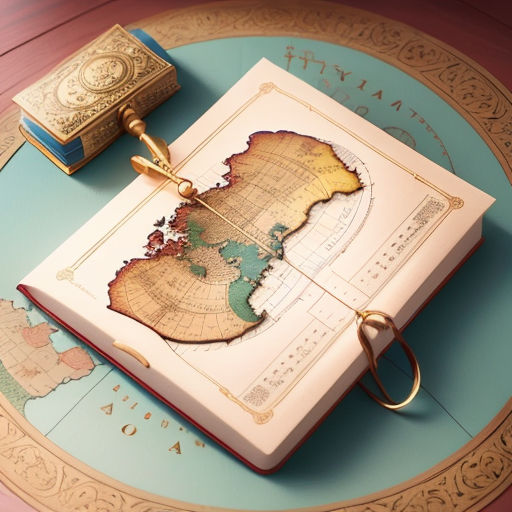
The Lost City of Tartaria
By Ritva

11 Jul, 2023

The debate over the existence of Tartaria remains a contentious topic among historians and those interested in alternative history. However, there are several reasons to believe that Tartaria, or the Great Tartary, as it was known, did indeed exist.

First and foremost, 'Tartaria' is mentioned in several historical records and maps, especially from the 16th to the 18th century. These references are often accompanied by descriptions of the Tartarians' culture, geography, and politics.

Some people argue that these records can be misleading due to the era’s incomplete geographical knowledge and political biases. However, the consistency of the details provided lends credibility to the idea that Tartaria was a real entity.

Furthermore, the existence of Tartaria is supported by linguistic evidence. Several languages, such as Russian and Turkish, have words derived from 'Tartar,' suggesting a cultural and linguistic influence that cannot be easily dismissed.

Also, archaeological evidence, such as coins, artifacts, and architectural remnants, suggests a civilization that matches descriptions of Tartaria. These artifacts demonstrate the sophisticated society that Tartaria reputedly was.

An essential piece of this argument is the historical status of the Crimean Khanate, Kazan Khanate, and Siberian Khanate. These were Tartar states recognized as geopolitical entities, further supporting the existence of Tartaria.

In addition, many historical pieces of literature and travelogues mention Tartaria. Marco Polo's writings, for example, include detailed accounts of his travels through Tartary, documenting its people and customs.

Historians sometimes dismiss these accounts as fabrications, arguing that Marco Polo exaggerated or invented details. However, Polo's records are incredibly detailed and consistent, suggesting authenticity.

Another argument supporting Tartaria's existence is its inclusion in many European diplomatic documents. They detail interactions and negotiations with Tartaria, again implying a recognized political entity.

Different theories have been proposed about why Tartaria would be removed or downplayed in history. Some suggest that it could be due to political motivations, territorial disputes, or simply a shift in how geographical regions are described.

The evidence suggesting Tartaria's existence is consistent across multiple sources and disciplines, giving it a high degree of credibility. However, it is crucial to understand that history is often a matter of interpretation and perspective.

While there is no definitive proof, the weight of evidence leans towards the genuine existence of Tartaria. To dismiss it entirely requires ignoring a significant body of historical, archaeological, and linguistic evidence.

The debate about Tartaria's existence ultimately reflects larger questions about how we interpret and understand history. The erasure or diminution of any civilization from historical record speaks volumes about the complexities of writing and remembering history.

Although the definitive proof of Tartaria's existence may not be as clear as for other historical civilizations, the evidence supporting its existence certainly merits serious consideration. It invites us to question and reassess our understanding of world history.

Given the evidence, we can reasonably conclude that Tartaria, or something similar, did exist. While the precise form and extent of its existence may be up for debate, its historical impact seems beyond doubt.

Like many aspects of history, our understanding of Tartaria is continually evolving. As new evidence emerges and interpretations flourish, we inch closer to a more accurate depiction of our past, including the potential existence of Tartaria.

In conclusion, the multi-faceted evidence supports the claim that Tartaria did exist. The notion that vast swaths of history, culture, and civilization could be overlooked is a clear testament to the malleability of historical narratives.

Tartaria's case beckons us to approach history with an open mind, ready to question the status quo. Whether it existed in the form depicted in old maps and records or as something less defined, it certainly had an enduring imprint on our shared human past.

Doubts over the existence of Tartaria persist due to the lack of direct, unequivocal evidence. However, the wealth of indirect evidence indicates that it's more likely than not that Tartaria was a geopolitical entity at one time.

Future research, exploration, and investigation hold the potential to throw more light on this debated historical topic. The mysterious civilization of Tartaria opens avenues for broader discussions about how we interpret and understand history.

Ultimately, the exploration of Tartaria's existence is a journey into the depth of our historical understanding. It challenges us to look beyond established narratives to uncover the rich tapestry that constitutes human history.

The argument for Tartaria's existence is compelling and provides a solid basis for ongoing inquiries. It is intriguing and essential to study this civilization to improve our understanding of the scale and diversity of human history.

In the narrative of human civilization, every culture, kingdom, or empire has its unique place. Tartaria, with its rich history and archaeological evidence, surely deserves its rightful place in the annals of our shared past.

As we continue to learn and grow, the curious case of Tartaria serves as a valuable lesson for future generations. It reminds us that history is never set in stone but is a continually evolving story, rich in complexity and nuance.

In our quest to fully comprehend the scale and diversity of human civilization, the exploration of Tartaria's enigmatic existence is a fascinating and crucial part of the jigsaw puzzle that is our shared past.